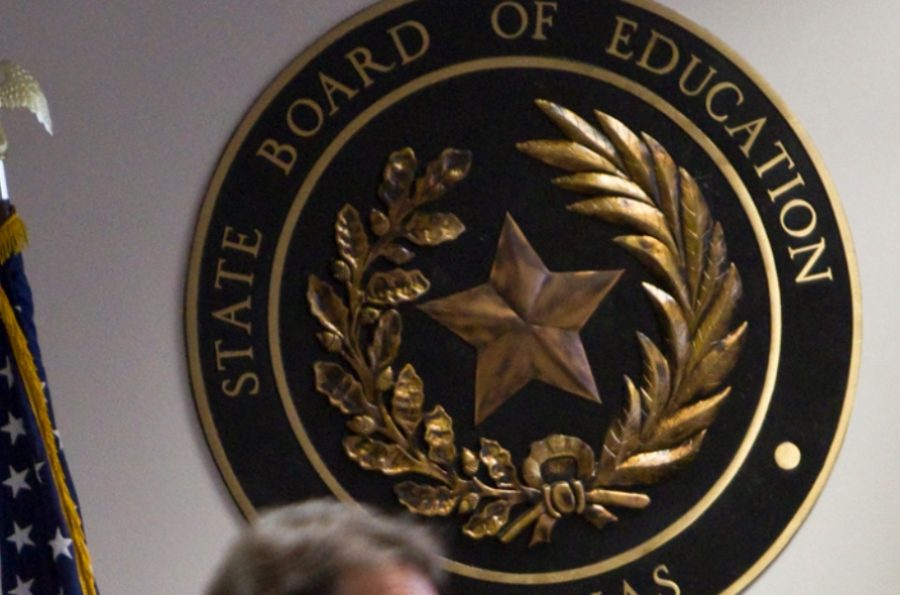State board cuts female figures from history curriculum
The state Board of Education made a preliminary decision on Tuesday to reject instructional materials focused on sex education, self-harm, and gender identity for middle and high schools schools
The State Board of Education elected to remove Hillary Clinton and Helen Keller from the history curriculum, as well as a TEKS line describing defenders of the Alamo’s actions as heroic in a vote two weeks ago. Since then, the board has been met with great backlash from educators, and many Americans as a whole, but has the opportunity to alter it before a November deadline.
I do think that the TEKS have a bit of an issue with overloading the number of facts that students are supposed to know. I don’t think that trimming the TEKS down should come at the cost of two important female historical figures. — AP Humanities and AP World History Sarah Wiseman
“I think in particular it is problematic because Hillary Clinton, she’s first woman to kind of make it that far in our system,” AP Humanities and AP US History teacher Sarah Wiseman said. “For Helen Keller, you know we don’t have very many women, let alone disabled people who kind of are in our story of our country, and her political activism was significant.”
“To remove them, you’re communicating via idea that they’re lesser, lesser in importance, and children internalize those lessons,” Wiseman said. “It helps to promote misogyny and patriarchal ideas that hold our female students back in life.”
The removal of Clinton and Keller from the curriculum was justified under the idea that there was a time issue of having too many figures to teach about.
“I do think that the TEKS have a bit of an issue with overloading the number of facts that students are supposed to know; there should be some freedom to pick and choose,” Wiseman said. “I don’t think that trimming the TEKS down should come at the cost of two important female historical figures.”
Clinton remains the only female politician among historical figures in the curriculum, and Keller is the only female figure with a disability.
“I think that the changes to the state board of education are not surprising,” social studies department chair Jeff Crowe said. “You know, it seems to me that the board is also unfortunately a political board. There are ten Republicans that sit on the board and five Democrats that sit on the board and sometimes their decisions are not based on historiography, or what history professors think is the best content to teach kids, but more about appeasing the parents, appeasing their constituents in the state of Texas.”
Women make up only a fifth of legislators in Congress, and with the changes, no former or current congresswomen will be in the state’s course of study.
“I think that a lot of the time, history is naturally biased by what you choose to add or not add into historical texts,” U.S. history teacher Emily Griffin. “That just kind of shows the general bias that we have throughout history where we tend to, like, only depict white, straight male history, and a lot of times leave out diversity and contributions by any sort of diversity.
However, Meridith Manis, the district’s social studies coordinator for middle and high school, suggests that students have other opportunities to learn about figures not listed in the TEKS.
“If an important person helps to give perspective or insight into an historical event or time period, teachers include them in the story,” Manis said via email. “Many more people are included in texts and primary sources as a part of the story that students learn about but are not tested at a state level.”
Others have also been up in arms over the board inserting their own opinions into the Battle of the Alamo.
That just kind of shows the general bias that we have throughout history where we tend to, like, only depict white, straight male history, and a lot of times leave out diversity and contributions by any sort of diversity.
— U.S History Teacher Emily Griffin
“I think that when you inject politics into state standards, [the board is] not teaching children to think for themselves and come to their own conclusions, which the ultimate point on a social studies curriculum is not to pass on ideology, but to teach students to interpret information correctly when they become adults,” Wiseman said. “That, to me, is the real problem with these revisions or lack thereof.”
Crowe believes that history teachers should educate students while striving for impartiality in their lessons.
“I think everyone has their own personal bias, but the best compliment that I can receive as a teacher is having kids in class for the entire year, and then they ask me at the end of the year, ‘what’s your political persuasion?’ or ‘what party do you support?’ or ‘what are your religious beliefs?’,” Crowe said. “If they don’t know that, then that tells me that I’ve left my own personal biases out of instruction and have taught the curriculum in a objective fashion where people don’t feel that their personal views are being picked on or criticized.”

Lucas is a senior in his fourth year of Wingspan. As vice-president of Youth and Government on campus and at the Plano YMCA, he helps teach members bill-writing...











